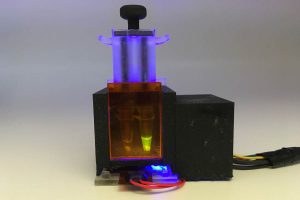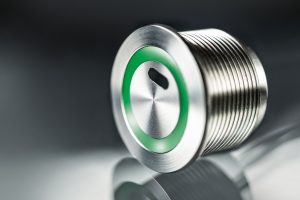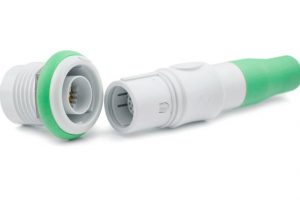Analog Devices is aiming at wearable patient monitoring devices with an analogue front-end for four vital signs: electrocardiogram, heart rate, blood-oxygen saturation and respiration rate. The chip, MAX86178, does this with three channels, one each for: photodiodes (optical PPG for blood oxygen and heart rate), voltages (electrocardiogram (‘ECG’ or ‘EKG’) and alternative heart rate) and bio-impedance (‘bio-z’ for respiration rate) Optical ...
Medical Electronics
Content related to medical electronics
Anglia Unicorn connects dots for tech start ups
Anglia Components has broken ranks with other distributors targeting the UK’s start-ups and entrepreneurs and has launched a dedicated division, Anglia Unicorn, to put academic start-ups in touch with financial seeders and both in touch with skilled engineers who can make the vision a reality. Named after the mythical creature which eludes capture, a Unicorn company is a start-up that ...
Non-magnetic RF inductors for medical imaging, and other tricky magnetic environments
Gowanda Electronics has introduced a series of non-magnetic RF inductors for medical imaging equipment – MRI and some x-ray machines – and other applications where magnetic materials must be avoided. Called 28MG, there are 60 devices spanning 1.2 to 18µH with resistances between 79mΩ and 4.15Ω, and carrying capacity of 315mA to 2.4A. They are all the same size, with bodies 23mm ...
Resting easy
Good quality sleep is linked to behavioural issues in young children. Laurence Weir looks at new sensor technology which tracks sleep patterns. The quality of a child’s sleep can have a huge impact on their lives. According to the American Academy of Pediatrics, a quarter of children under the age of five do not get adequate sleep. A continual lack ...
Wireless ‘neurograin’ network connects to brain neurons
Wireless ‘neurograins’, 48 of them, have been used to record rodent neural activity, at Brown University in Rhode Island. The sensing particles independently record electrical pulses made by neurons and send the signals to a central hub outside the skull for coordination and processing. “One of the big challenges in the field of brain-computer interfaces is engineering ways of probing as ...
Wash and wearable
Precision cleaning of wearable electronics boosts reliability, says Emily Peck of Microcare. The past year has seen a huge boost in the growth for wearable devices to diagnose and monitor patient health. The importance of remote patient monitoring (RPM) has become even more important in the wake of the Covid-19 pandemic. Lockdowns, travel restrictions and the requirement for social distancing ...
Low-cost device engineered for 1 hour Covid variant test
Harvard and MIT researchers have teamed up to prototype a self-contained saliva-based diagnostic Covid test that can distinguish between variants in an hour and is “just as accurate as the PCR tests now used”, according to MIT. It is called ‘miSherlock’, for ‘minimally-instrumented Sherlock’, where Sherlock is a Crispr-based DNA/RNA test invented at Harvard’s Wyss Institute for Biologically Inspired Engineering. Two ...
Sponsored content – Contactless switch for hygienic switching
Do not touch! Please, do not touch! Because that doesn’t have to be the case at all. A new generation of switches for touchless switching has been developed for exactly this purpose. Switching without touching. Switching without contaminating the surface with potentially harmful germs, viruses or bacteria. How do these switches work and what are they capable of? SCHURTER TTS: ...
8in TFT display module for industrial and medical
Review Display Systems (RDS) of Kent has introduced an 8in TFT display module from industrial display manufacturer Tianma. Part of Tianma’s professional (‘P’) series, P0800WVF1MA00 features WVGA (800 x 480 pixels) resolution, 15:9 aspect ratio and -30°C to +80°C operating range. “The Tianma P-series display line-up is designed for use in a wide range of human-machine interface applications where guaranteed, long-term operation ...
Smiths reduces cost of medical connectors
Smiths Interconnect has introduced a lower-cost variant to its Hypergrip range of medical connectors. Called Hypergrip Flex, the main change is a move from its >20,000 insertion cycle Hyperboloid socket contact to its >2,000 insertion cycle ‘MR’ socket – an 0.4mm diameter socket suited to “standard cycle life applications”, according to the company. Comparing Hypergrip and Hypergrip Flex Both Hyperboloid and MR ...
 Electronics Weekly Electronics Design & Components Tech News
Electronics Weekly Electronics Design & Components Tech News







